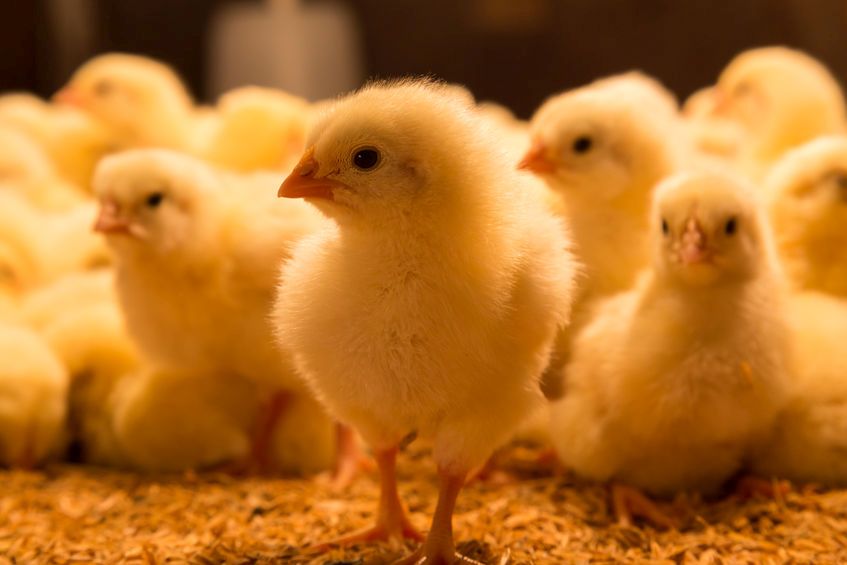
Technology has been developed in Germany to prevent the culling of one-day-old male chicks.
The first eggs produced by hens that have been through the new process have appeared on the country's supermarket shelves.
Animal welfare campaigners have been increasing pressure on the egg industry to end the practice of culling male chicks, with the potential threat of a ban in some countries.
Canada is mulling over the possibility of in-ovo selection technology being brought to market, and attempts are being made elsewhere to develop a solution to what is seen as a growing animal welfare issue.
Now, backed by Government funding, German scientists have done so.
“This is a great day for animal welfare in Germany. In this way we will set the pace in Europe," said the country's Minister of Food and Agriculture, Julia Klo¨ckner.
“My ministry has provided around five million Euros to support research for promising methods of gender identification in hatching eggs. With the market readiness of the process presented today, Germany is a pioneer.
“Now it is possible to identify the gender of the chicks in the hatching egg through a needle-tip tiny hole. Male hatching eggs no longer need to be incubated and killed immediately after hatching.”
'Extra price'
The new process has been developed by Seleggt - a joint venture between retail company REWE Group and a Dutch technology company, HatchTech.
Eggs produced as a result of the process were going on sale in 223 REWE and PENNY stores in Berlin in November. And REWE Group is planning to sell them in all 5,500 REWE and PENNY stores in Germany this year.
“Concerned customers can now actively help to put an end to the practice of male chick culling through their shopping behaviour," said Jan Kunath, the deputy chief executive officer of REWE Group.
“I strongly believe that the extra price of a few cents per egg carton is well invested,” he said. “Our customers will be able to buy free-range respeggt-eggs gradually throughout Germany.
“As a company, we are setting an example that sustainability and animal welfare are fundamental principles for us,” he said.
Opposition
Research carried out by Wageningen University in the Netherlands found that 90 per cent of consumers were opposed to the practice of culling day old male chicks.
In Austria, producers are charging consumers premium rates for eggs from systems that avoid culling the day-old males. All organic eggs in Austria have to be produced without the culling of day-old chicks.
Attempts to create a legislative ban on the practice in Germany have been thwarted so far but pressure is increasing from animal welfare campaigners
And in the United States, the egg industry has conceded that it needs to stop the culling.
United Egg Producers, which represents the vast majority of American egg farmers, has said it aims to end the practice.
Green fluroescent protein
Research conducted by geneticists at Charles Sturt University (CSU) in Australia are working on producing chickens that have been genetically modified with a green fluroescent protein that will allow the sex of the developing embryo to be determined inside the egg.
The protein is originally found in jellyfish and glows green under ultraviolet light. Initial work has proved successful and the scientists are intending to do further research on developing the technique.
However, the fact that the protein comes from a jellyfish would mean that the chicken had been genetically modified.
The trials in Canada have taken a different approach. The technique involves the traditional candling method to identify male chicks in the egg, although this is carried out automatically by machine.
The technique developed in Germany involves the use of a laser to burn a hole of no more than 0.3 millimetres into the hatching egg shell.
A small amount of allantois fluid is extracted through a non-invasive procedure, leaving the interior of the hatching egg untouched.
The allantois fluid is placed on a patented marker outside the hatching egg. Through a change in colour, this marker will indicate whether the sex-specific hormone estrone sulphate can be detected in the hatching egg. Seleggt says the process is 98 per cent accurate.
'Long way to go'
Seleggt says it intends to make the technology available to the industry as a cost-neutral service. It says the patented process will be available to the first hatcheries from 2020.
“Despite all the euphoria, we still have a long way to go,” said Dr. Ludger Breloh, managing director of Seleggt.
“We will work vigorously from our side to make the Seleggt process available to the hatcheries in a cost-neutral system," said Dr Breloh, who said that in 2019 the intention was to move from market readiness to start of production.
“At the same time, I believe the development and funding of the dual-use breeds to be equally important. Until then, gender identification in hatching eggs could serve as gap-bridging technology.”
Julia Klöckner said: “The scientists did extraordinary work and I am pleased to hear that there are partners in the industry who implement this process and make it generally accessible. For the consumer it is also a significant step towards more animal welfare.
“It is also an opportunity for the hatcheries in Germany. Furthermore, it is an alternative for hatcheries that enables them to continue producing in Germany, while doing more for animal welfare at the same time.
“Because once the process is made available to all and the hatcheries have implemented the process, there will be no reason and no justification for chick culling. Regardless, it is important not to lose sight of the dual-use breed and to support it.”
Seleggt says that the system will provide complete traceability. Every hatchery equipped with the process, rearing farm, laying farm or egg packing centre will enter the relevant information via app.
The data is stored, may be viewed by all members of the supply chain and cannot be altered.
